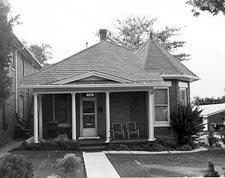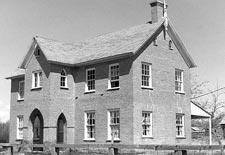
2 minute read
CONTENTS Why This Guide to Architecture?
WHY THIS GUIDE TO ARCHITECTURE?
This architectural guide is provided by the Utah State Historic Preservation Office for those who have an interest in the historic architecture of Utah. We also developed it to aid consultants in architectural fieldwork. Input for the information came from fieldwork, architectural historians, and published sources. Much of the text and photographs for the earlier buildings comes directly from Thomas Carter and Peter Goss’s Utah’s Historic Architecture, 1847-1940: A Guide .
This guide is not exhaustive, but it covers the most commonly found types and styles of historic architecture in the state--residential, commercial, agricultural and religious .
Although it mostly covers “historic architecture”(more than 50 years old), in order to make it more useful for consultants doing architectural survey and inventory, the guide also covers some common examples of more-recent types and styles. Construction date ranges are estimates only and apply mainly to Utah . Dates in other states or regions vary .
Vernacular Architecture

This guide focuses on the buildings we encounter every day, more commonly known as vernacular architecture. Architectural historians debate what really constitutes vernacular architecture or how to best define it. But ultimately, vernacular architecture is the common architecture for any given region and at any given time .
For the most part, vernacular buildings were not formally designed by an architect. In the broader view, however, that is not always the case; architects did design some examples that we consider here to be vernacular.
Type vs. Style
This guide will follow the classification system established in Carter and Goss’s field guide: that is, organizing and identifying buildings by both plan type and architectural style .
Essentially, type is the most basic arrangement of the building’s layout, in the floor plan and massing of structural components. The building’s style is determined by the architectural and ornamental details applied to the basic structure .
Although we may use an example of a building as a particular type in the “type” section, we might also use the same building in the “style” section because of the architectural detail applied to it. In a few categories, the same term is used to denote both a type and a style .
What is considered historic?


Many of the examples covered in this guide have only recently become what we call “of the historic era,” meaning they have been around for at least 50 years, which is the age criterion established by the National Register of Historic places. For many of these examples there has not been enough time to study and better understand these buildings, and there is not enough known about them to do further classification and possibly sub-categorization. As our knowledge expands on certain types of architecture, we will update this guide. This guide will always be a work in progress.
If you have information to add, please contact us.










